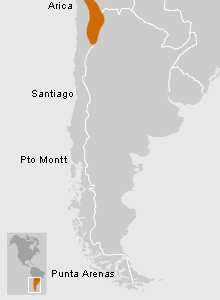Chile’s Norte Grande boasts three ecological strata: the coast, the Pampa or desert, and the Puna or Altiplano. The last of these is further divided into the Puna Seca (dry Puna), which stretches from Arica to Iquique and is humid enough to allow for agriculture, and the Puna Salada (salty Puna), which runs from Iquique to the Atacama Salt Flat and where conditions are so harsh that human occupation is impossible most of the year. For its part, the desert Pampa is scored by valleys and ravines in the far north, then gives way to the Tamarugal Pampa, with its vast forests of tamarugo, chañar and algarrobo. South of the Loa River is the absolute desert. On the coast, in contrast, both the climate and resources available are much more stable.
How to Arrive
El Museo se encuentra ubicado en pleno centro de Santiago, en la esquina de las calles Bandera y Compañía, a una cuadra de la Plaza de Armas.
Tickets
Chileans and resident foreigners: $1,000 Foreigners: $8,000 Chilean students and resident foreigners: $500 Foreign students: $4,000
Guided Visit
El Museo cuenta con un servicio de guías, sin costo adicional, para los establecimientos educacionales.
Information for Teachers
Invitamos especialmente a coordinarse con alguno de nuestros guías para programar una visita o actividades de motivación y seguimiento que aprovechen de la mejor forma la experiencia de visitarnos.
Audioguides
Download recordings of the Permanent Exhibition display texts in English, French, Portuguese and Spanish here. These audioguides are in mp3 format and are arranged by cultural area, following the same order as our exhibit galleries. Descargue desde esta página audioguías en castellano, inglés, francés y portugués con los textos de las vitrinas de la […]






































